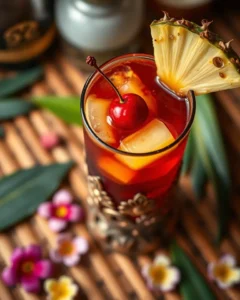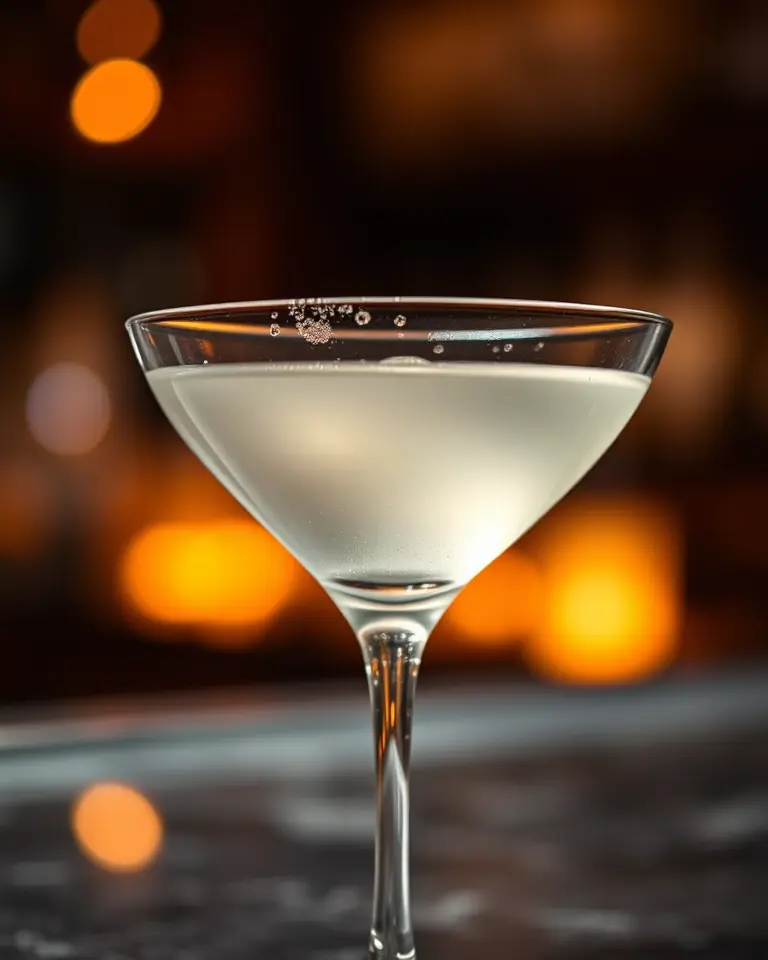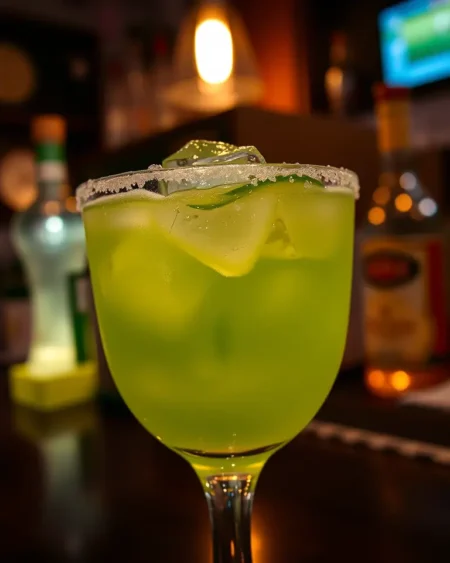The Dry Martini, a classic cocktail known for its simplicity and sophistication, has a fascinating history and numerous variations. Among these, the Montgomery Martini, distinguished by its exceptionally dry 15:1 ratio of gin to dry vermouth, stands out. This article delves into the origins, recipe, and nuances of this particular Martini, offering a comprehensive guide for both enthusiasts and those new to the world of cocktails.
Understanding the Dry Martini
Before exploring the Montgomery, it’s important to understand the fundamentals of a Dry Martini. At its core, a Dry Martini is a cocktail made with gin and dry vermouth, and it’s often garnished with either an olive or a lemon twist. The term “dry” refers to the minimal amount of vermouth used, contrasting with “wet” martinis, which contain more vermouth.
The Evolution of Dryness
The dryness of a martini has evolved significantly over time. In the early days, martinis often used equal parts gin and vermouth. By the 1920s, a 2:1 gin-to-vermouth ratio became common. Over the 20th century, the trend continued towards drier variations with ratios like 3:1, 4:1, and eventually 5:1 or 6:1 becoming popular. This progression towards dryness has led to the emergence of the Montgomery Martini, known for its extreme dryness with a 15:1 ratio.
The Montgomery Martini: A Legacy of Precision
The Montgomery Martini is not just another variation; it carries a unique story. It’s named after British Field Marshal Bernard Law Montgomery, a prominent figure in World War II, who was known for his strategy of overwhelming his opponents with a 15:1 numerical advantage. This preference for overwhelming odds is mirrored in the cocktail, with its high gin-to-vermouth ratio.
Hemingway’s Preference
While often attributed to General Montgomery, the 15:1 ratio is also linked to author Ernest Hemingway. It is said that Hemingway frequently ordered this exceptionally dry martini at Harry’s Bar in Venice. He is mentioned in a 1951 novel where a character orders the “Montgomerys. Fifteen to one.”
The Allure of the 15:1 Ratio
The 15:1 ratio creates a profoundly dry cocktail, where the gin is the star, with only a whisper of vermouth to add complexity. This ratio results in a drink that is neither sweet nor bitter, and is purely and exquisitely dry.
How to Make a Montgomery Martini
Creating a Montgomery Martini is straightforward, but precision is key to achieving the right balance. Here is a classic recipe:
Ingredients:
- 3 oz (90ml) of high-quality London Dry Gin
- 0.15 oz (4.5ml) of Dry Vermouth
- Ice
- Lemon twist or orange zest for garnish (optional)
- Optional dash of orange bitters
Preparation:
- Chill the Glass: Begin by chilling a martini glass. This can be done by placing it in the freezer or filling it with ice while you prepare the drink.
- Combine Ingredients: In a mixing glass, add ice, then a dash of dry vermouth, followed by the gin. Some prefer to stir the vermouth first. For an even colder martini, store the gin and vermouth in the freezer.
- Stir Gently: Stir the mixture gently with a bar spoon for 20-30 seconds. This chills the drink without diluting it excessively. Unlike some other martini variations, it is generally agreed that the 15:1 Montgomery is better shaken rather than stirred.
- Strain: Strain the cocktail into the chilled martini glass, ensuring no ice is transferred.
- Garnish: Express the oils from a lemon twist over the drink and use it as a garnish or use a twist of orange zest. The zest adds an extra aromatic layer, complementing the gin. Alternatively, use an olive.
Key Considerations
When crafting a Montgomery Martini, consider the following aspects:
Gin Choice:
The quality of the gin is paramount, since it forms the bulk of the drink. A London Dry Gin is often preferred for its clean and crisp character, allowing the vermouth’s subtle notes to come through.
Vermouth Quality:
Using a good quality dry vermouth is also essential. Though the proportion is small, its character impacts the final taste of the cocktail.
Shaken or Stirred Debate:
Traditionally, martinis are stirred to maintain clarity and a silky texture. However, some bartenders and enthusiasts prefer to shake a 15:1 martini, finding it enhances the experience. This is a matter of personal preference.
Garnishes:
While a lemon twist is the classic garnish, some prefer an olive or an orange zest. The garnish should complement the dryness of the drink and enhance the aromas.
The “Bone Dry” Martini:
It’s important to distinguish between a Montgomery Martini and a “bone dry” martini. The bone dry version uses even less vermouth, sometimes just a rinse of the glass, or no vermouth at all, as in the case of a Churchill martini. The Montgomery maintains a precise 15:1 ratio.
Other Martini Variations
The Martini world is vast and varied. Some other popular variations include:
- Wet Martini: Uses a higher ratio of vermouth to gin, typically around 3:1.
- Extra Dry Martini: Uses very little vermouth, though not as little as the Montgomery.
- Fifty-Fifty Martini: Uses equal parts gin and dry vermouth, offering a balanced taste.
- Dirty Martini: Includes a splash of olive brine, adding a salty, savory note.
- Vodka Martini: Substitutes vodka for gin, a popular choice since the 1960s.
- Vesper Martini: Made with gin, vodka, and Lillet Blanc, popularized by James Bond.
- Perfect Martini: Combines equal parts of sweet and dry vermouth with gin, creating a complex flavor profile.
Final Thoughts
The Montgomery Martini, with its 15:1 ratio, is a testament to the evolution of the classic dry martini. It represents the pinnacle of dryness, offering a potent and sophisticated experience for those who appreciate the pure taste of gin with only a subtle whisper of vermouth. Whether you are a seasoned cocktail enthusiast or a curious newcomer, the Montgomery Martini is a must-try for anyone seeking to explore the nuanced world of martinis. Its simplicity, combined with a rich history, makes it a truly special cocktail that continues to captivate palates around the globe.







